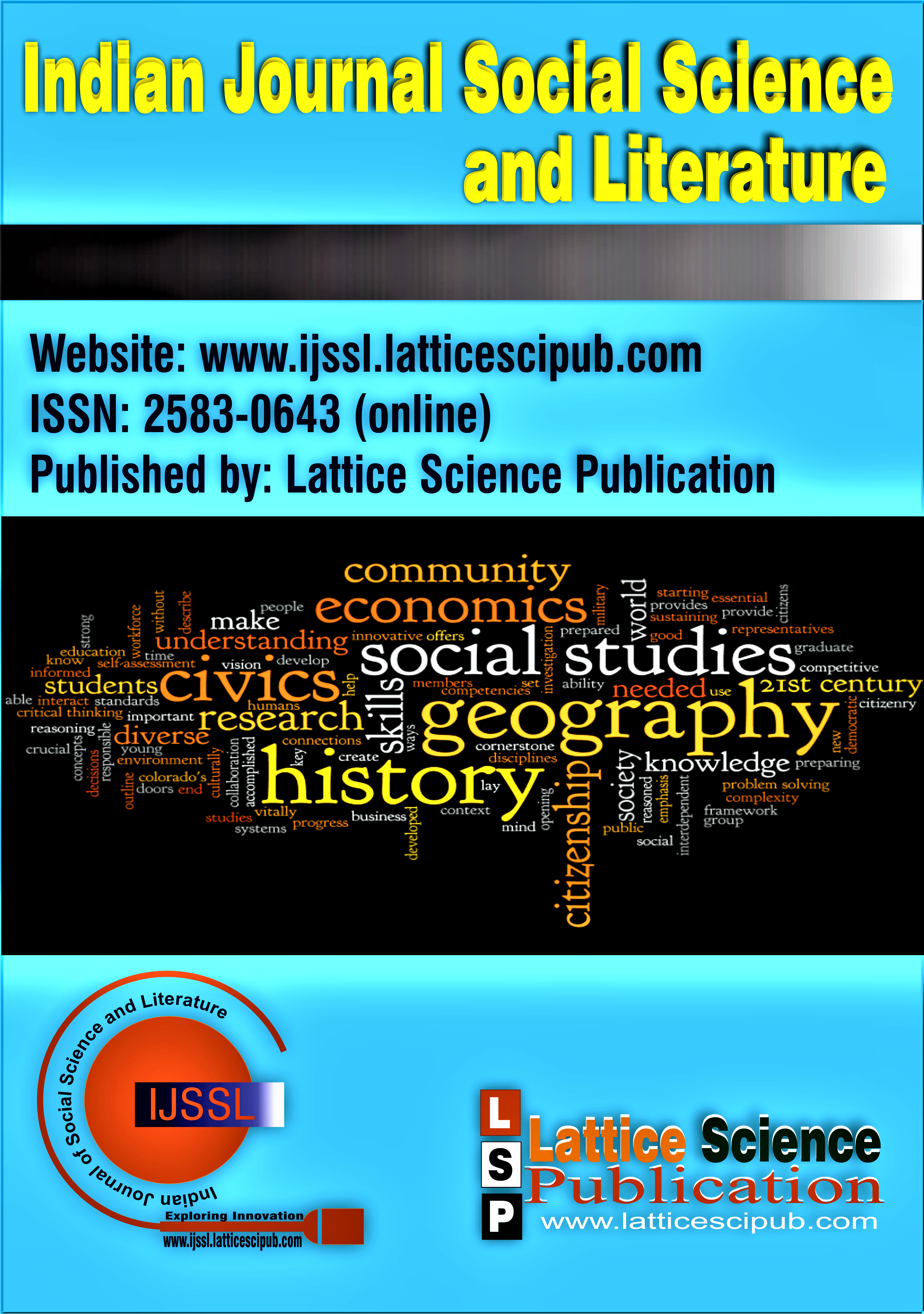Performance of Idolmaking: Intersection of Caste, Tradition and Space Among Mritshilpis of Kumartuli
Main Article Content
Abstract
Kumartuli, an artisanal neighbourhood in North Kolkata, is home to custodians of the intricate idol-making craft, which has been primarily passed down through generations as a form of heritage and knowledge. The craft, practised by the Kumbhars (potter), represents a dynamic interplay of heritage and innovation, mediated by the locality's socio-cultural aesthetics and spatial fabric. Various anthropological studies have attempted to visualise Kumartuli as a locality, situated at the rich intersection of culture, aesthetics, and art, drawing a connection between the ecologies of work and ritual practices prevalent within the community structure. The community lies at the intersection of deep-rooted caste structures and struggles to preserve the sustainability of the craft in the current scenario of iconographic processuals. This paper attempts to analyse the lived experiences of idol makers, drawing on the convergence of caste as a form of social capital and folklore, which embodies oral history and space as a manifestation of social construct. Through qualitative interviews, this paper explores how individual idol makers navigate the complex intersection of cultural and religious symbolisms that shape their process of identity formation in the day-to-day schema of life.
Downloads
Article Details

This work is licensed under a Creative Commons Attribution-NonCommercial-NoDerivatives 4.0 International License.
How to Cite
References
Shove, E. (2012). The dynamics of social practice: Everyday life and how it changes. SAGE Publications. ISBN: 9780857020437. https://us.sagepub.com/en-us/nam/the-dynamics-of-social-practice/book235021
Lefebvre, H. (1991). The production of space (D. Nicholson-Smith, Trans.). Blackwell Publishing. (Original work published 1974). ISBN: 9780631181774.
Goffman, E. (1959). The presentation of self in everyday life. Anchor Books. ISBN: 9780385094023.
https://monoskop.org/images/1/19/Goffman_Erving_The_Presentation_of_Self_in_Everyday_Life.pdf
Chakraborty, S. (2024). Exploring Gender Dynamics In Idol Making: Visualising Approach to Identity Formation Among Female Idolmakers of Kumartuli Through Intersection of Sexual Division of Labor and Emotional Labor. African Journal of Biomed Res.
https://doi.org/10.53555/AJBR.v27i4S.4920
Chakrabarty, S. (2012). The clay artists of Krishnanagar and their craft: A socio-cultural perspective. New Delhi: Indian Publications. http://opac.rbu.net.in/cgi-bin/koha/opac-detail.pl?biblionumber=96355
Bose, N. K. (1975). Structure of Hindu society. Calcutta: Orient Longman. ISBN: 9788125008552.
https://archive.org/details/in.ernet.dli.2015.142550
Sen, A. (2018). Identity and violence: The illusion of destiny. London: Penguin Books. ISBN: 9780141027807.
https://www.colombotelegraph.com/index.php/amartya-sen-identity-violence-the-illusion-of-destiny/
Mukherjee, R. K. (1937). The guilds of ancient India. Bombay: D. B. Taraporevala Sons & Co. ISBN: 9788121506745.
https://www.jstor.org/stable/26405469
Bourdieu, P. (1986). The forms of capital.
In J. G. Richardson (Ed.), Handbook
of theory and research for the sociology of education (pp. 241–258). Greenwood Press. ISBN: 9780313235290.
https://home.iitk.ac.in/~amman/soc748/bourdieu_forms_of_capital.pdf
Bandyopadhyay, S. (2020). Caste, politics, and the making of modern India. New Delhi: Routledge. ISBN: 9780367335611
Sen, M. (2015). Craft, identity, hierarchy: The kumbhakars of Bengal. In The Politics of Caste in West Bengal, 232–255. Routledge. ISBN: 9781315686318. https://www.academia.edu/42086212/Craft_Identity_Hierarchy_The_Kumbhakars_of_Bengal
Guha-Thakurata, T. (2015). In the name of the goddess: The Durga Pujas of contemporary Kolkata. New Delhi, India: Primus Books. ISBN: 9789383064646. https://primusbooks.com/in-the-name-of-the-goddess/
Gupta, D. (2004). Caste in question: Identity or hierarchy? New Delhi, India: SAGE Publications. ISBN: 9780761932796.
https://www.gacbe.ac.in/images/E%20books/Caste%20in%20question%20-%20Identity%20or%20hierarchy.pdf
Jodhka, S. S. (2015). Caste in contemporary India. New Delhi, India: Routledge. ISBN: 9781138823774.
DOI: https://doi.org/10.4324/9780203701577
Deshpande, S. (2013). Caste and inequality in India today. New Delhi, India: Penguin. ISBN: 9780143428228
Bandyopadhyay, S. (2016). Caste and capital in contemporary India. New Delhi, India: Oxford University Press. ISBN: 9780199457499. https://jmi.ac.in/upload/programme/cs_cdms_phd_III_Caste_in_Contemporary_India.pdf
Zukin, S. (1995). The cultures of cities. Blackwell Publishers. ISBN: 9781557863165.
https://www.wiley.com/en-us/The+Cultures+of+Cities-p-9781557864376
Heierstad, G. (2017). Caste entrepreneurship and the illusions of tradition: Branding the potters of Kolkata. Anthem Press.
http://www.jstor.org/stable/j.ctt1jktqn3
Hannerz, U. (1992). Cultural complexity: Studies in the social organization of meaning. Columbia University Press. ISBN: 9780231076301. https://www.scirp.org/reference/referencespapers?referenceid=2963547
Foucault, M. (1986). Of other spaces. Diacritics, 16(1), 22–27.
https://doi.org/10.2307/464648
Paul, P. & Das, A. (2021). An ethnographic study towards globalization of the idol making industry of Kumortuli in Kolkata. Eurasian Journal of Anthropology, 11(1), 1–10.





